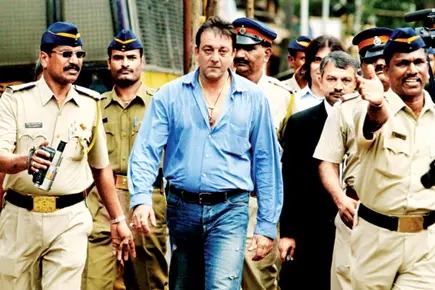Cunliffe, J.@mdashThis is a reference made to us in a murder case by the learned Sessions Judge of Rajshahi. There were two accused on their trial and they were both acquitted. The learned Judge made a short reference, which is as it should be, and referred us to the charge he delivered to the jury for a further explanation of his views. He came to the conclusion that the verdict of the jury was a perverse one. The circumstances of the case were that the accused No. 1, who is the young third wife of the dead man, Suren Biswas, had an intrigue with his younger brother, who is the second accused. This intrigue is proved by certain letters she wrote to him which were discovered, which quite clearly show that there were guilty relations between the pair. It is curious there have been these letters, at least it appears to me to be so. In hearing these criminal appeals for some time now, I do not remember a case where a Hindu girl of the village class was ever found to have written letters of this character.
2. The brother-in-law was staying in the house of the brother and his wife at the time the brother''s death took place. It was said that the husband and the wife had been quarrelling and that the husband had sold'' his wife''s ornaments for his small business with the exception of two ornaments which she had retained and that the husband wanted to get hold of these two last pieces of jewellery, but the wife refused to give them up. The house where they lived had another house adjoining it where, during the evening, there was a card party going on and a woman by the name of Charu Bala, having heard cries from the house of the husband Suren, peeped through the wall and although she never saw the husband at that time nor his body, she said that she did see the wife coming in with water and washing the floor. She also said that she saw the wife hang up a piece of cloth by way of a screen which, she thought, was in front of the house and then she saw Manibala, the wife, and her brother-in-law go away from the house, carrying a sack between them. It was obvious that there was something in the sack.
3. Afterwards a search was made in the jungle and this sack was found with the body of Suren inside it. It had been hidden with straw on the top and there were various wounds on the body, wounds which looked as if they had been caused by a dao. According to the medical evidence, they were wounds in the neck. The doctor who gave evidence considered that these injuries could not have been self-inflicted, but he was of the opinion that they could have been caused by a dao, which was produced in Court and which had been obtained by the neighbours from the brother-in-law when they searched the house. It was said to have been covered with blood. Then there was further evidence that after cries had been heard from the house, some of the neighbours came along to the house to enquire what was occurring, and the wife turned them away, saying that they had no business to come and interfere. There was a local gentleman of some position in the village: he is called Dinesh Babu. He seemed to have taken charge of the matters when his attention had been called to the crime and it was said that both the accused made confessions in his presence which they afterwards repeated before a Magistrate with regard to what had occurred. These confessions do not coincide. The wife''s confession sets out that after the quarrel when the husband was lying down on the bed in the verandah, her brother-in-law, who had been a witness of the quarrel, came along with the dao, which the wife had previously seen her brother-in-law conceal, and struck at the husband as he was lying on the bed. And then the confession went on to say that she, the wife, gave two further blows with the dao whilst her brother-in-law was holding him down. She said that she gave him these blows, because after the first blow, he attempted to get up from his bed and threatened to kill her and she gave the second blow to her husband to save her own life.
4. The brother-in-law Hemendra Nath''s confession, however, sets out that at the instigation of the wife who, after her husband was lying down on the bed in the verandah, came to him saying that he must be finished altogether to death (referring to her husband), and asking him if he was ready to help her-the confession went on-that her brother-in-law seized hold of the husband, held him down and that it was the wife who delivered two cuts on her husband''s neck and afterwards the wife gave him another blow with the dao. This confession also sets out that the body was placed in a sack and hidden in a ditch where it was covered up with straw. But at the trial they went back on these confessions and they substituted for them statements involving some of the other villagers. They said that their confessions had been extorted by violence.
5 The jury were unanimous with regard to the wife, holding her to be not guilty and although three of the jurors considered that the brother-in-law was guilty of murder, the remaining six chose to give him the benefit of the doubt.
6 This was a very well-tried case, the learned Judge, unlike some of his colleagues, concentrating the essentials of the judicial investigation and putting a plain case to the jury of murder and nothing else in the case of both the accused. It will be noticed, however, that the prosecution story, except for the retracted confessions, does not tell us by means of substantive evidence what exactly occurred at the time that Suren''s death took place. We do not know, apart from the confessions, as to how the attack started. On the other hand, we do know that the husband had been quarrelling with his wife and I think it was a case in which the jury, if they so wished, could, considering the confessions and the circumstantial evidence which supported the confessions, have convicted both the accused of murder. On the other hand, it must be said that this was a case which depended on fact and fact alone. It was the kind of ease where a powerful defence Advocate could and probably would have, if it had been tried at, shall I say, the Sessions in this city or in the Sessions at any town in the British Empire, made great play with the element of doubt at to what actually took place and that gap in the prosecution case, which was never satisfactorily filled, if one eliminates the confessions. It seems to me that such decision to which the jury came was a matter for them and for them alone. It may be that they perpetrated an injustice, I do not know: but it is the kind of case where I do not think that the Judges of an Appellate Court ought to substitute a second-hand opinion on facts, never having observed the witnesses, never having been subjected to the atmosphere of the Court, to the detriment of the accused''s life and liberty.
7 These references which come to us with such frequency are in extreme cases a very necessary part of the criminal procedure in places like India, where one may have, in outlying districts, unintelligence and sometimes perhaps corruption, (I do not say that corruption exists in this case) for the purpose of rectifying manifest and glaring pieces of injustice: but when they are presented to us, as they were in this case, on pure fact, turning upon the opinion of the jury, they are in reality, as conducted in this Court of Appeal, nothing more or less than appeals by the Crown. I have always been brought up to think that it is a great mistake for the Crown to appeal against acquittals in criminal cases depending upon pure questions of fact where you allot the decision of these questions of fact to a jury. It is a course which is never adopted in the United Kingdom and in, for example, the Criminal Appeals Jurisdiction Act, which established the Court of Criminal Appeal in England, no section will be found which provides for appeals by the Crown from decisions of juries in criminal cases.
8 For this variety of reasons, I do not think that this reference should be accepted although, as I have already said, it is a reference which was well-presented to the Court and backed by very substantial arguments.
9 We direct that the two accused be acquitted and set at liberty forthwith.
Henderson, J.
I agree. The case is not at all an easy one. For example, the impression made by the love letters is that while Manibala was as infatuated as ever, Hemendra had cooled off and was not particularly anxious to continue the relations any more. There are many reproaches and protests that he did not write to or coma to see her and so on. This is not a case in which it can be said that in view of an intrigue which undoubtedly had gone on in the past, both parties were anxious to get rid of the deceased. The confessions are probably false; at any rate, the Crown did not accept them as true. Indeed the confession of the girl does not amount to a confession of the actual murder. I do not suppose the jury attached very much weight to it. What they had to do was to satisfy themselves on the circumstantial evidence in the case that each individual Appellant must have been guilty of this murder. As my learned brother has pointed out, nobody knows the precise circumstances in which fee deceased met his death, and I find it impossible to say that the case is of such a nature that the jury ought not to feel a reasonable doubt regarding the guilt of either person.

